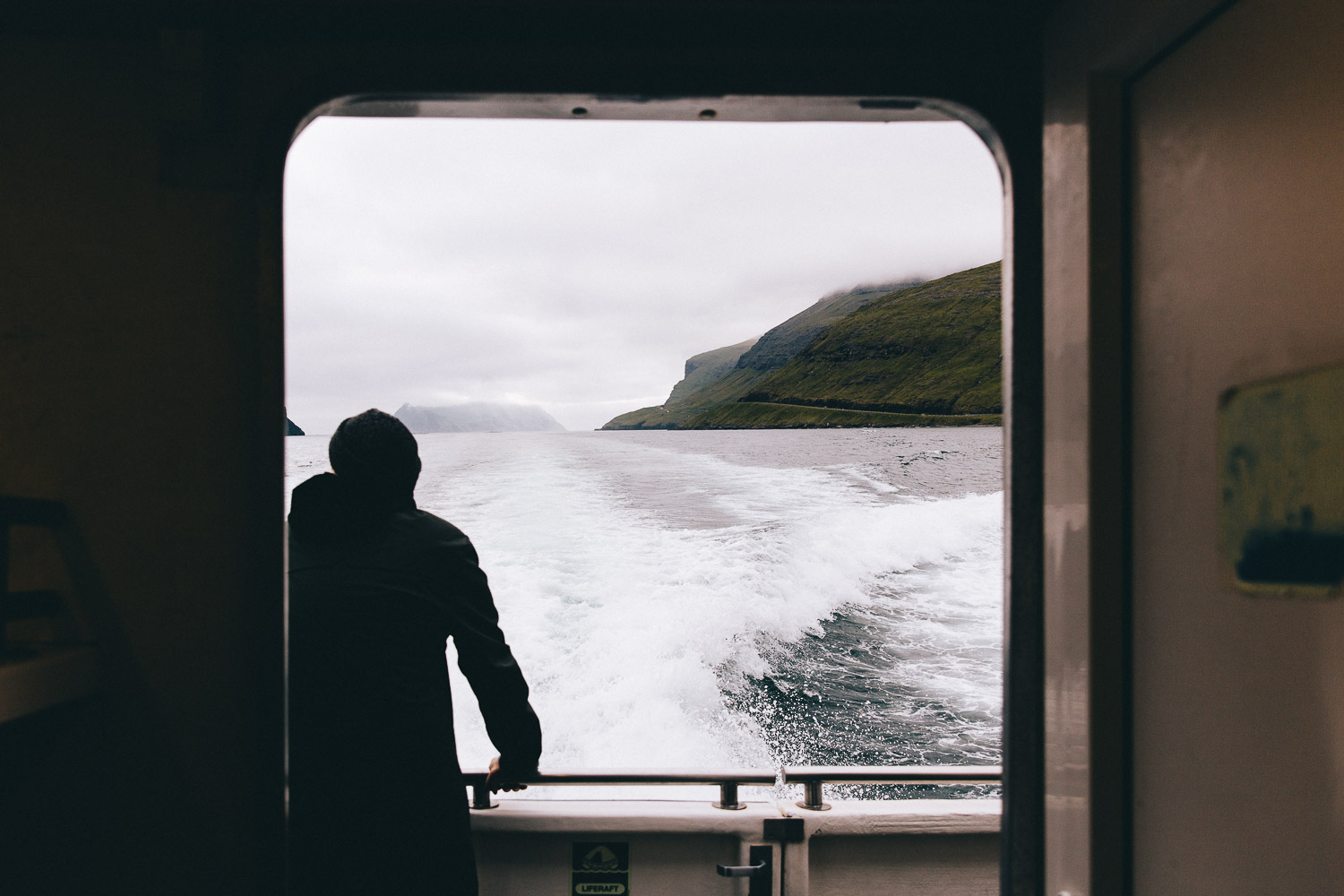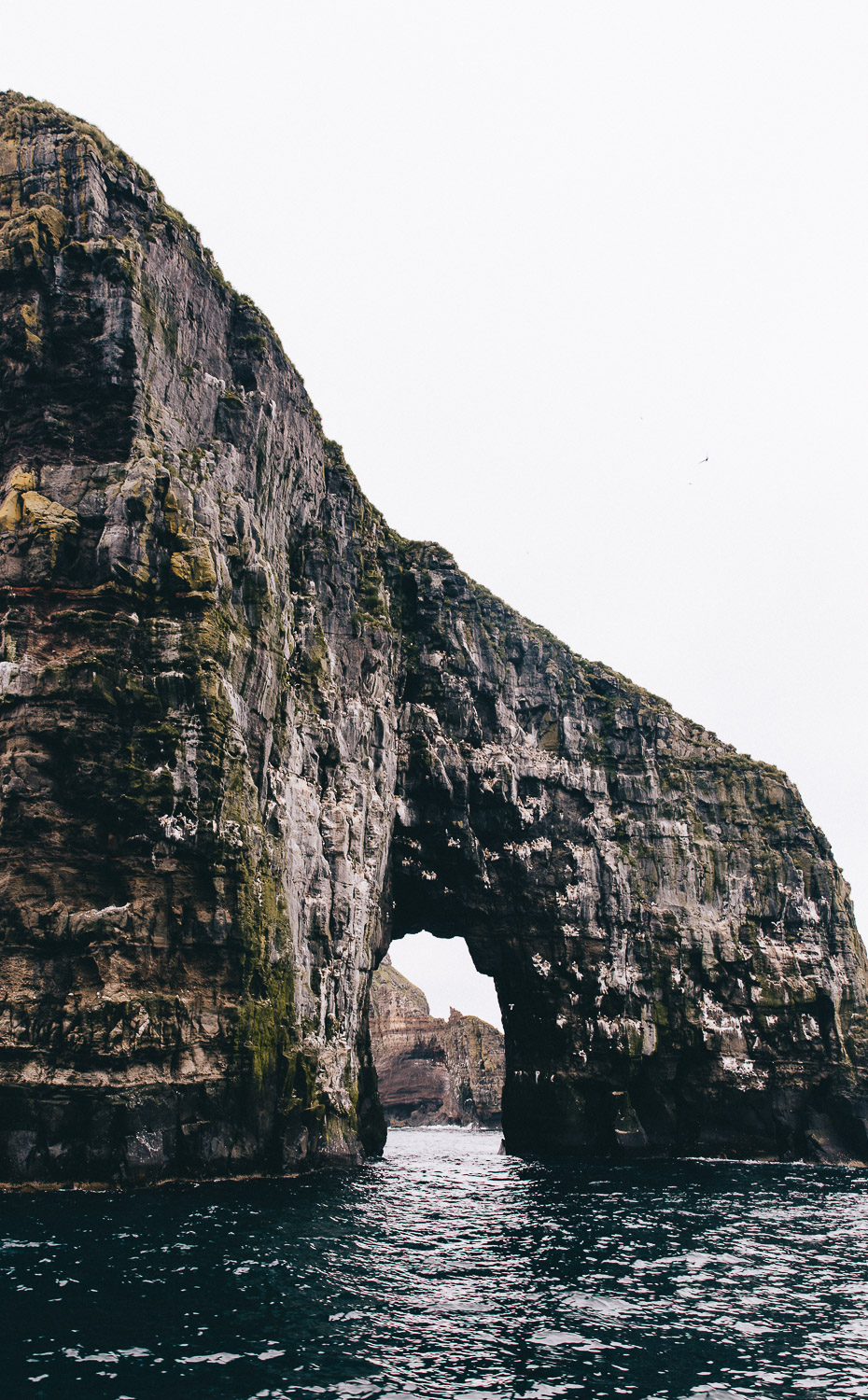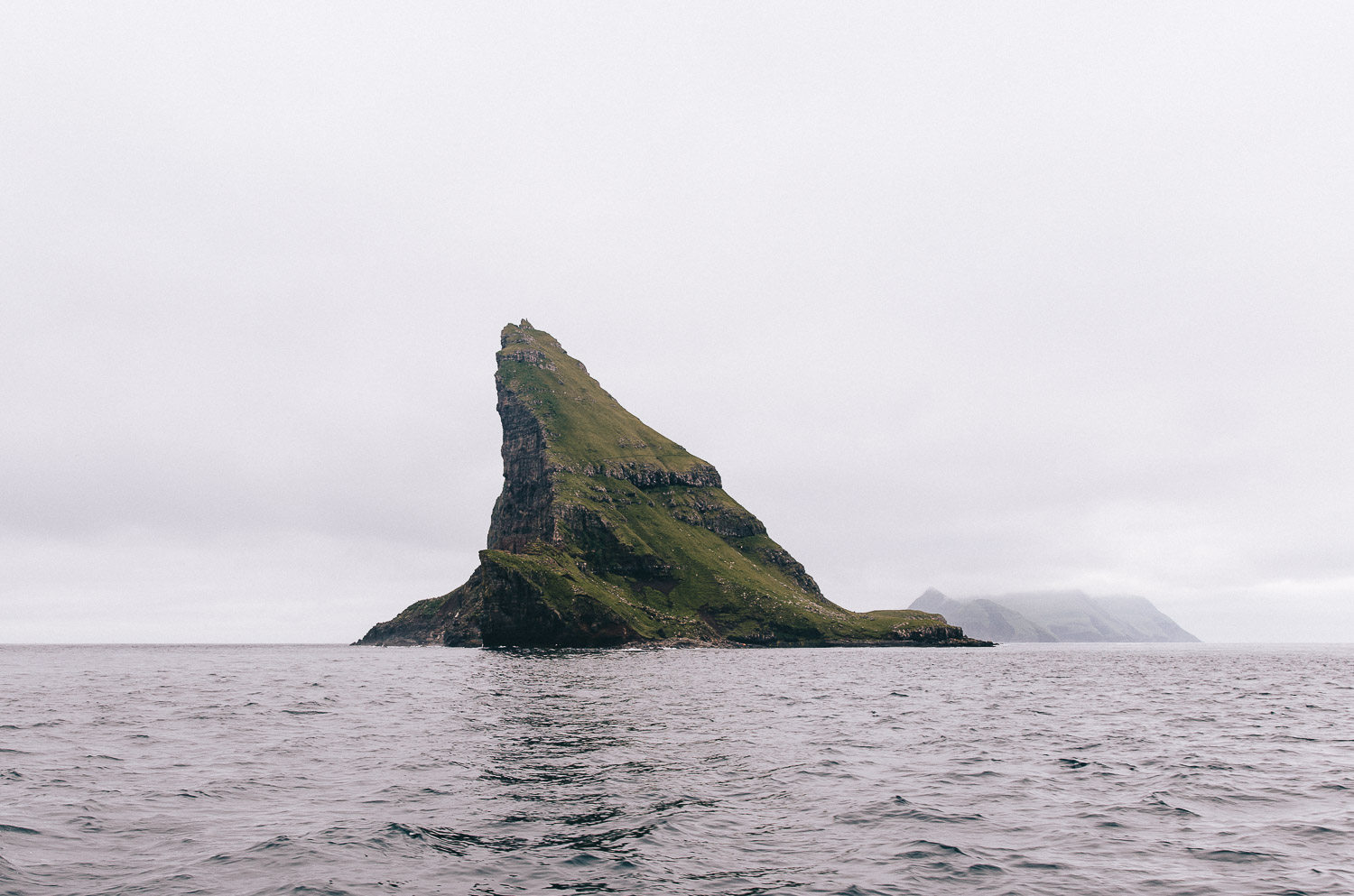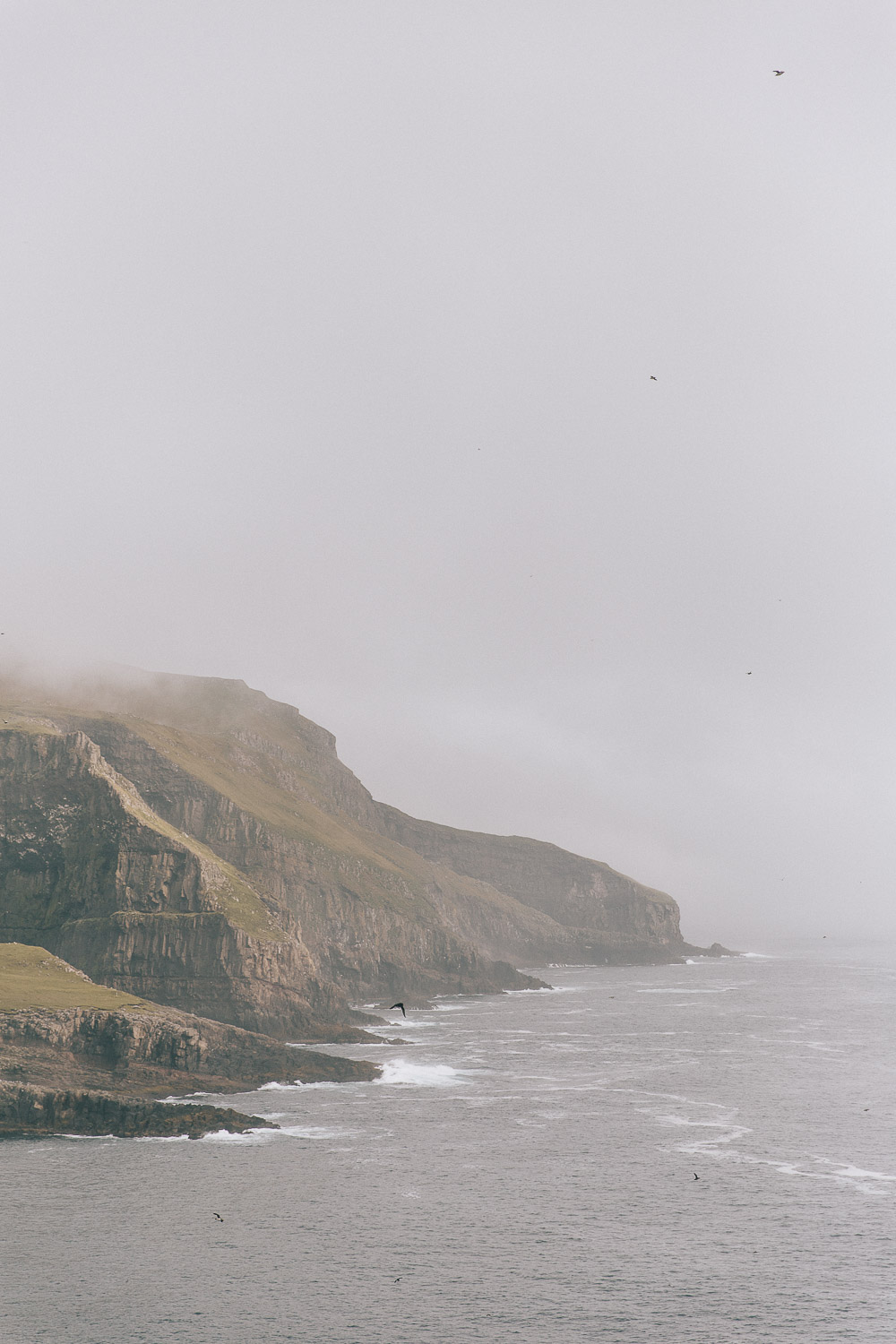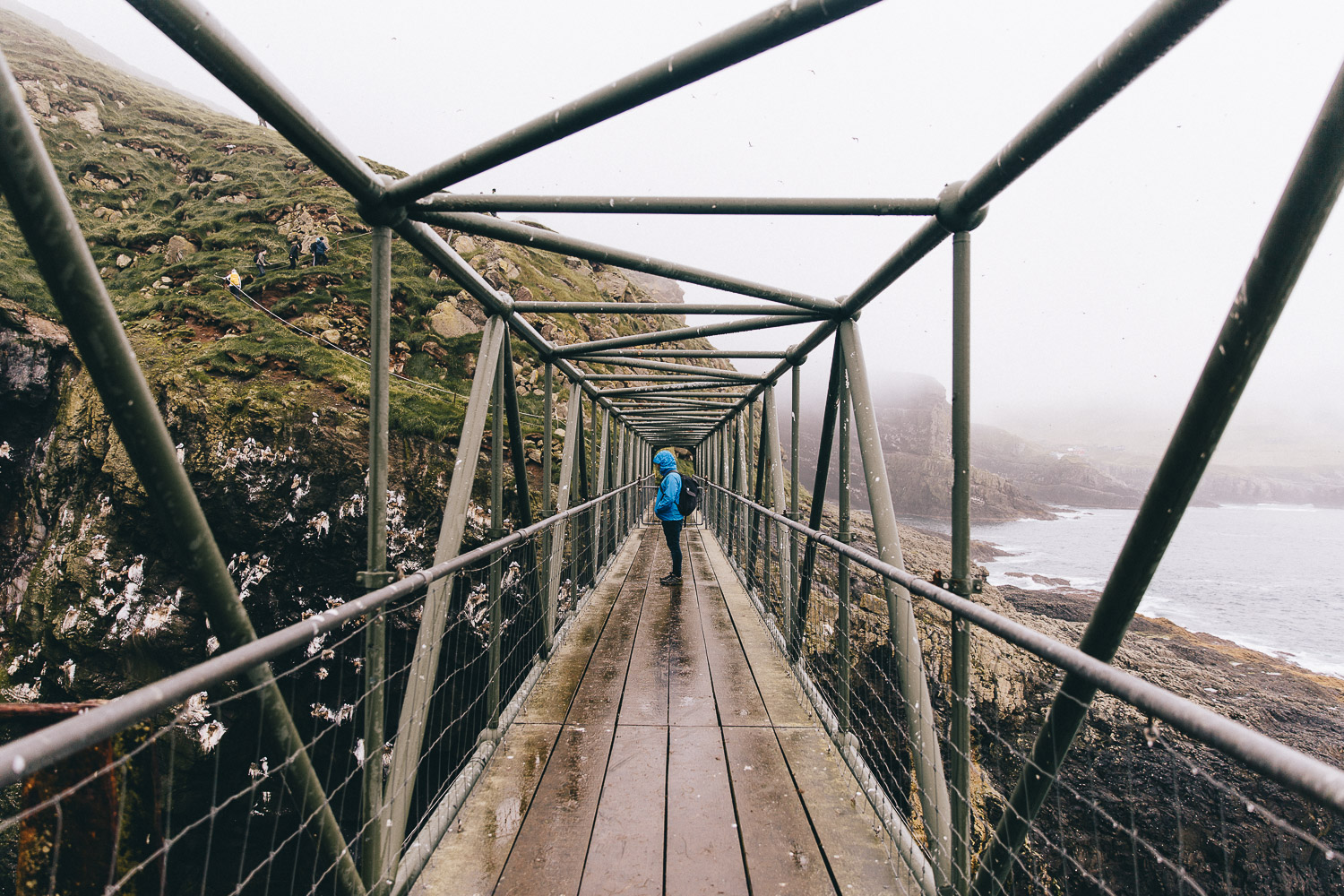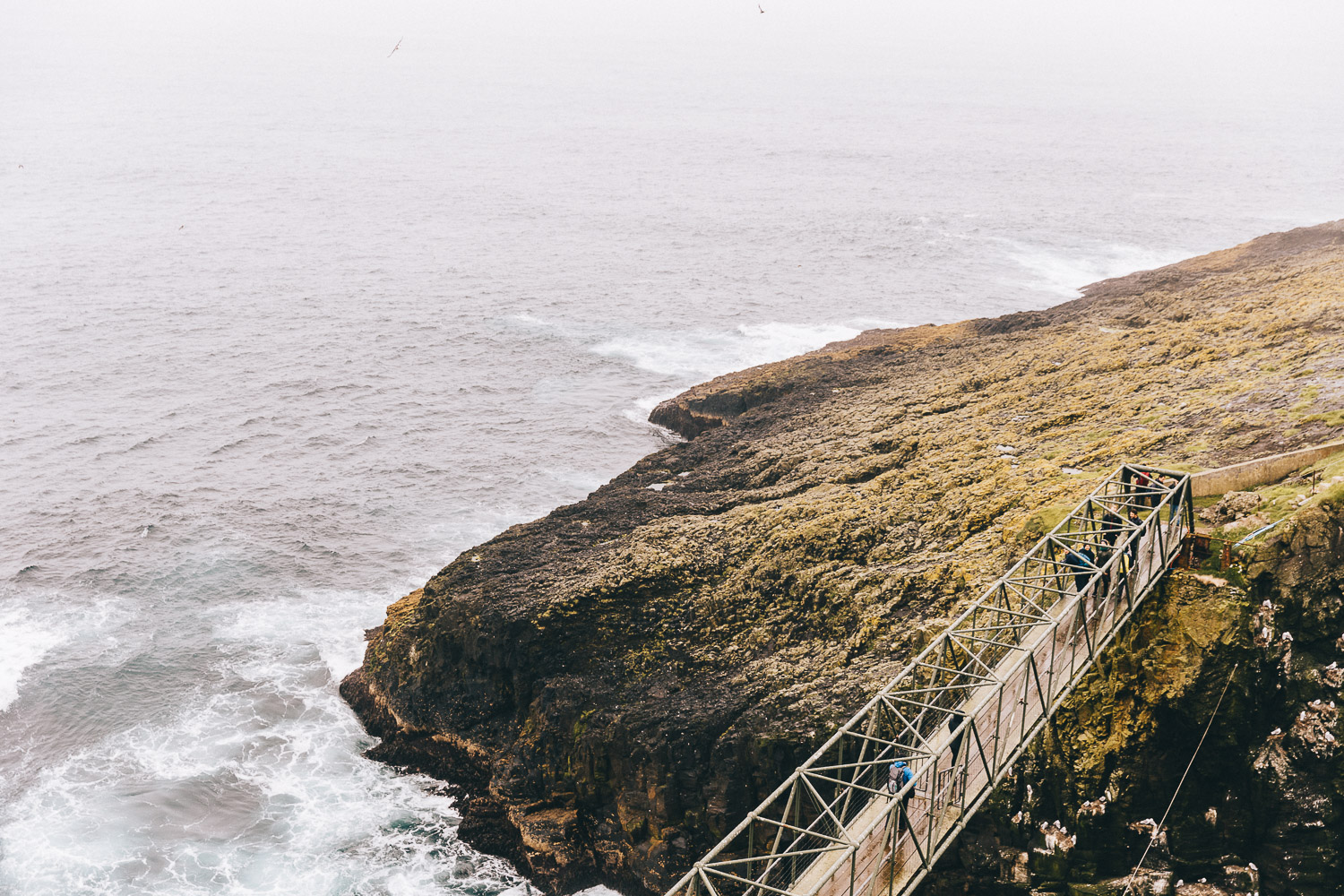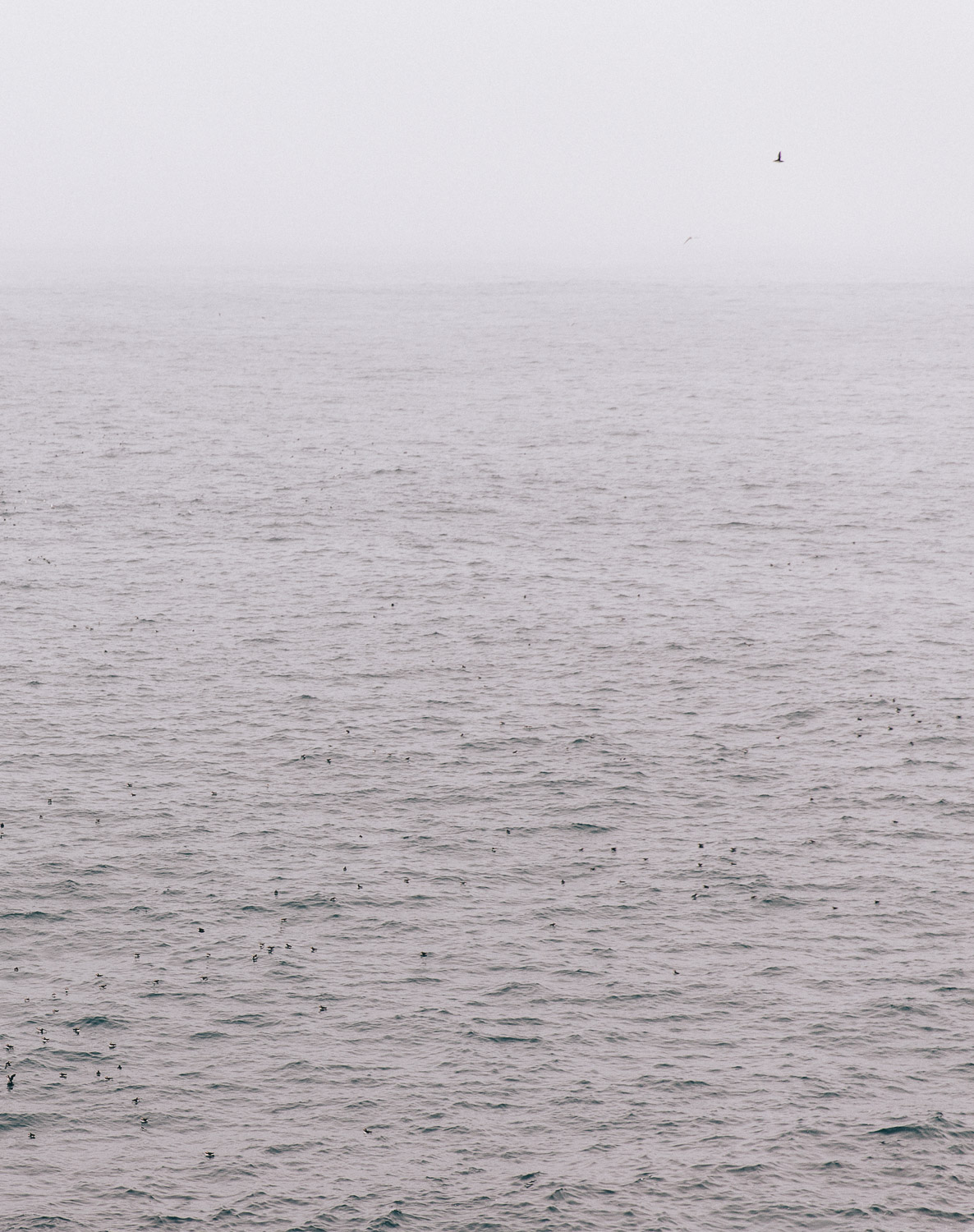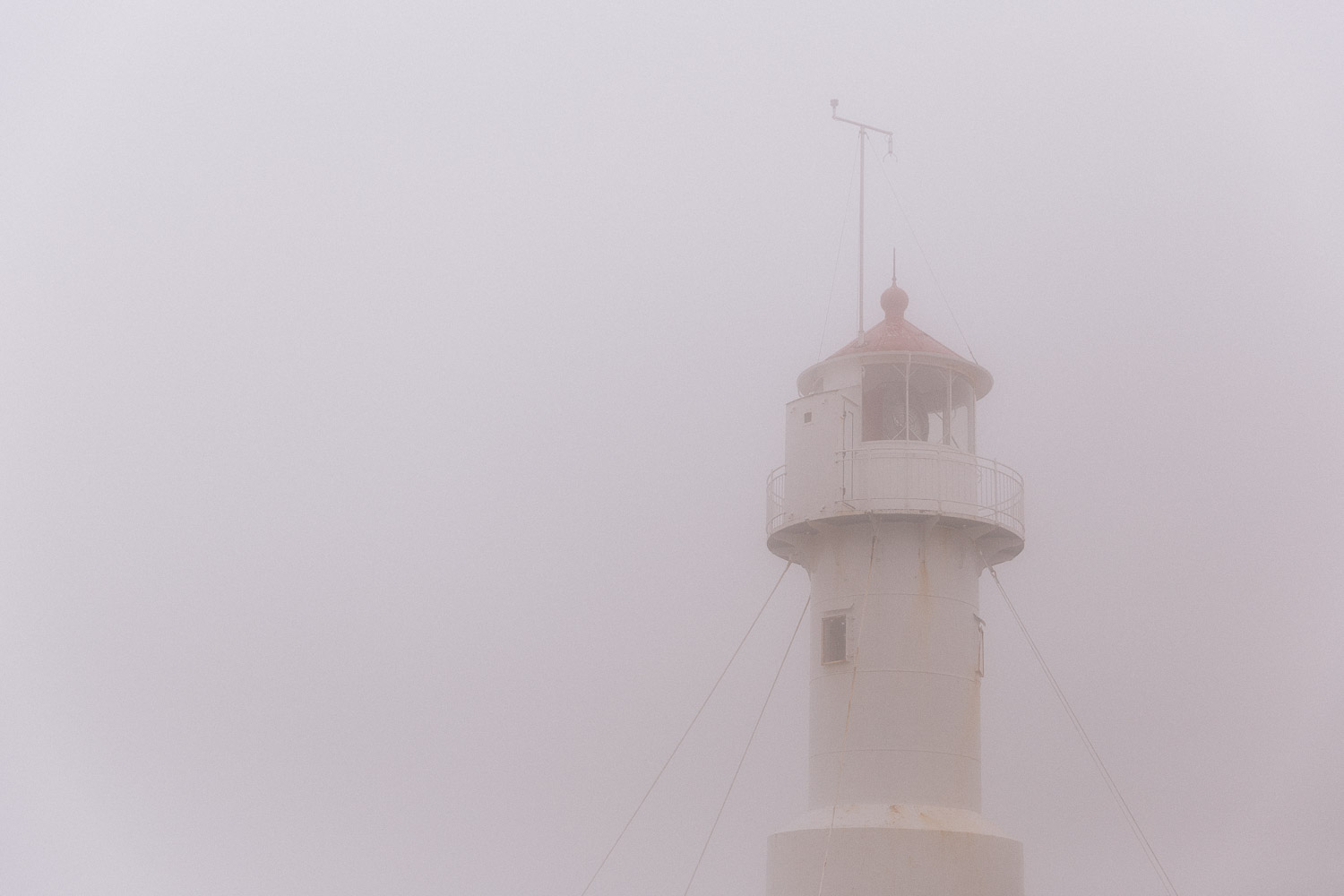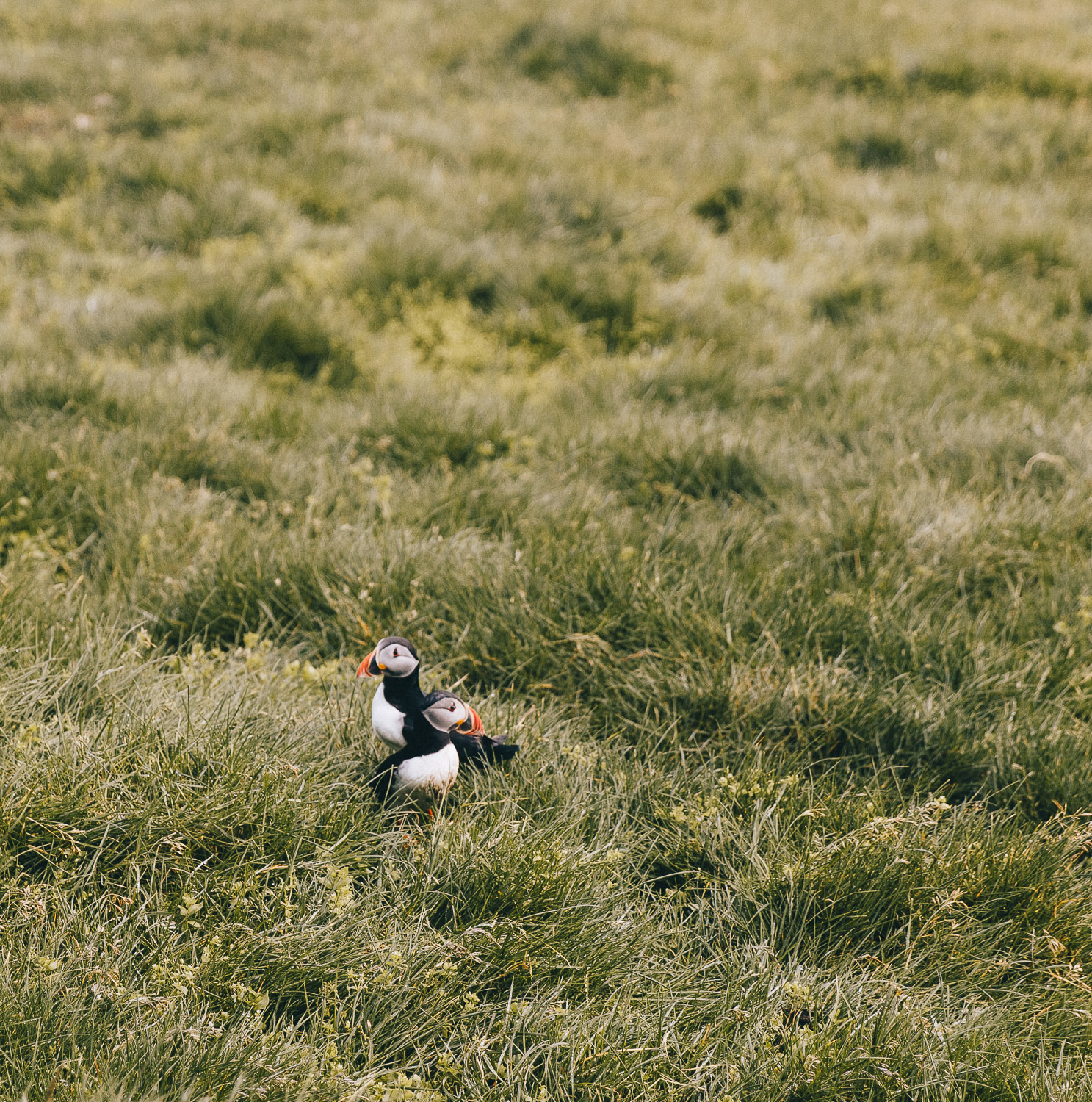Updated 2020
Planning your trip to the Faroe Islands and keen to take a day trip to Mykines? This guide is for you!
With thousands of puffins, epic scenery, one of the most photogenic lighthouses in northern Europe, plus a memorable journey by sea or air to reach it, it’s little wonder that a day trip to the tiny island of Mykines is one of the most popular things to do on the Faroe Islands.
However, reaching Mykines is not without its complications and restrictions, and planning ahead to ensure that it’s actually possible to include it on your own Faroes Islands itinerary is absolutely essential. Indeed, even though the Mykines hike was a key part of seven night summer road trip across the Faroe Islands, we very nearly missed out on making it due to a combination of bad luck and bad weather.
From how to get to Mykines from Vagar, issues with cancellations and the weather, and advice on the hiking route, here are five essential things to know before you take a day trip to Mykines.
How to Get to Mykines
As the westernmost island in the Faroes, and with a population numbering barely a few dozen at its highest point in the year, reaching Mykines is not as simple as jumping in your car or waiting for the next bus. Indeed, there are only two ways to get to Mykines and visits are only permitted from May 1st to August 31st.
The Mykines ferry from Sørvágur
There are daily departures from the Sørvágur ferry terminal on the island of Vagar (see location here on Google Maps), at 10.20 a.m. and 16:20 p.m., with the vast majority of visitors taking the morning option. Journey time is 45 - 60 minutes depending on conditions, and it also affords you some spectacular perspectives on the islands.
A one-way ticket costs DKK 100 per person (£12 / €13), with reduced fees for children and pensioners.
It is highly recommended that due to the limited departures and increasing popularity of the Faroe Islands as a tourist destination, that you book your ticket in advance - ideally several weeks ahead of your planned departure, especially if you plan to travel during the peak summer months. The website has a useful counter displaying how much availability remains for each crossing, with maximum capacity being around 90.
Return tickets should be booked at the same time (the return departure time is 17.05 pm) and you will be provided with an email confirmation which can be used as a ticket.
Tickets can be booked via this website.
Further information on the #36 timetable for the Sørvágur to Mykines ferry can be found here.
If you are going to be travelling from Torshavn to Mykines, be sure to factor in the 45-60 minute drive to the ferry terminal (and to also read our guide on the best things to do in Torshavn!)
The Helicopter to Mykines
The only alternative way to reach Mykines is rather exciting, and nowhere near as expensive as you’d expect!
Helicopter travel is subsidised on the Faroes and is one of the main ways to reach the more remote, lesser populated islands. Although it is primarily a service for residents, it has firmly established itself as a way for visitors to fly to Mykines from Vagar Airport.
Operated by Atlantic Airways, the Mykines to Vagar helicopter runs 3-4 times a week depending on the season with a journey time approx. 22 mins. One-way tickets are priced 145 DKK (£17 / €19.50) per adult.
It’s important to note that tickets are only available to buy via this website seven days before your intended departure, and with each flight holding only 10 passengers at a time, this will not be a viable option for many of you. Therefore, if you’re super keen to have your first helicopter experience over the Faroes, you will need to be super organised (and perhaps a little lucky).
Schedule and flight status can be found here.
Expect Your Mykines Trip To Be Cancelled
Unfortunately, once you’ve done the hard part of finding and booking your tickets in advance, that doesn’t necessarily mean all will go to plan once you’re actually on the Faroes!
As we’ve mentioned in other Faroes planning posts, this Atlantic archipelago is is often victim to dense fog, gale-force winds, and a heady combination of the two; this can inevitably result in both the Mykines ferry and helicopter being cancelled at short notice.
We were advised of this before we visited, and so included contingency plans when designing our Faroe Islands itinerary. In short, our main advice to you is to try to visit Mykines in the first day or two of your visit, which means that booking your ferry or helicopter ride as far in advance as possible is essential. This way, if a cancellation occurs, then you can at least try to arrange a visit for a later date in your trip.
Of course, with each boat load of cancelled visits, the demand for subsequent days increases on an already popular route. In our case, we were incredibly fortunate that an additional ferry was organised to cater for the dozens of people who had suffered from the cancellations earlier in the week. This doesn’t always happen however, and additional ferry runs to Mykines will only be arranged if the original route is sold out five days before departure and the weather looks good.
So, how do you find out if your Mykines ferry or helicopter ride is cancelled?
Checking weather reports the day before will likely manage your expectations, but the majority of cancellations will be made only a few hours before scheduled departures. Your best bet is to therefore ask your hotel / hostel reception early in the morning to check for information, or visit the same websites you used to book your ticket where they will have a status update.
Full refunds are provided if your trip is cancelled due to adverse weather, but this does not provide you with any priority access for boats trips later in the week; essentially, you’re now at the back of the queue. In this case, it’s best to hop back on to the booking sites a.s.a.p to confirm availability and, if everything is fully subscribed, cross your fingers that an additional ferry run will be made available (so make sure to keep checking the ferry booking website).
You Have to Pay a Hiking Fee in Advance
As Mykines is a protected island, visitors in the period of 1st May - 31st August are required to pay a fee for entry and to support the island’s conditions.
When we visited, that fee was only 100 DKK however, due to the increased popularity and to further protect the fragile wildlife, in 2020 it was increased to 250 DKK (£30 / €33). Children under 6 are still free, and their are reduced rates for under 16s.
Note that you will be required to show proof of payment at the start point of the Mykines hike trail, so have a copy on your phone or printed.
Further information | Find our typical travel costs in the Faroe Islands.
Prepare for the Mykines Lighthouse Hike Trail
And now on to the fun stuff - seeing thousands of puffins and hiking to one of the most photogenic spots on the Faroe Islands at the Holmur lighthouse.
From the ferry dock point on Mykines, it’s a walk up steep decaying concrete stairs. Take a right to head towards the tiny Mykines village cluster. Before you enter the village proper, you will see a noticeboard on the left hand side and a barely visible trail through a field - this is your start point for the Holmur Lighthouse hike (the lighthouse is also called ‘Mykineshólmur’)
Walk up this trail and you will be met by a local representative who is responsible for checking that you’ve paid the entry fee, and also advising on any issues along the hike route. From this point onwards, it’s a relatively clear route towards the lighthouse but it does involve some slippery rocks, narrow descents, and a relatively treacherous metal and wood bridge over the Atlantic.
On our visit, the first half of the hike was sodden and thick fog restricted our viewing to barely a few metres ahead; this did not restrict our ability to spot puffins however!
On a relatively early section of the hike, you will walk through a thin sliver of trail (called ‘í Lamba’) where you will be met by their breeding ground burrows on either side and hundreds of adorable little critters mooching in the grass, flying overhead, or coming in to land in their hilariously inimitable way. For obvious reasons, you are not able to linger in these sections for long and a local marshall on the route will either hold back or hurry along people to keep numbers at a manageable level.
Due to the fog, which cleared up for the second half of our hike, we were unable to see the Holmur lighthouse in all its photogenic glory, but any of you who have already seen pictures of the most western point of the most westerly island on the Faroes will know how special it can be with the stunning island backdrop.
The entire route will take 2.5 - 3.5 hours, and most abilities should have no issues along it. Good hiking boots, a waterproof, and layers are necessary however.
A little secret we’re happy to share with you is that the entire hiking trail, plus some lesser visited paths on the way back from the lighthouse, are marked out on Google Maps, so make sure you download it as an offline map - it’s a great back-up option in case you find yourself off the trail by mistake.
If you are hesitant to visit Mykines independently, then there are a variety of locally-led guided day tours to Mykines available.
Our final surprise on Mykines, after taking a less trodden trail back towards the village, was the village itself. Not only were there more homes and people than we imagined, but this secluded island actually had some of the best cafe and lunch options on the Faroe Islands and even a hostel (Marit's House B&B).
So, ensure that you have enough time after your Mykines hike to warm up with a plate of homemade soup, a coffee, or a Faroese beer in one of the two cafes in the village (they’re right next to each other) with views over several traditional turf roof houses.
And, whatever you do, don’t forget to be down at the ferry pick-up point (the same place where you were dropped off) for the 17.05 p.m. departure back to Vagar!
Respect the Wildlife & Local Community
It should go without saying but, inevitably, there are people who simply do not know how to respect wildlife when they travel.
Mykines is a special place which is gradually opening itself up to the potential of tourism to support those who choose to live here. However, every visitor to this island (and the Faroes in general) has a responsibility to act in a sustainable, respectful manner and to appreciate that your presence in these previously cut-off areas is a relatively new phenomenon.
Responsible Travel Rules and Tips in Mykines
Stay to the trails which are marked | One of the reasons the entry price increased recently, was because of the sheer number of hikers along the trails, and damage that can do to the local landscape. For this reason, it’s incredibly important not to go off-path. It’s also much safer to stick to where you should be; there are some mighty tall cliffs around, and tumbling off one probably wouldn’t end well!
Leave your drone alone | Drones are strictly prohibited in Mykines, in order to protect the hundreds of puffins flying through the air. Expect to be disciplined (and potentially fined) should you disregard this.
Respect the wildlife | The wardens that patrol the paths are actually very good at preventing people from upsetting the puffins, but it’s super important give each bird and animal the distance it deserves and not linger too long in one spot.
Close gates behind you | Sheep tend to wander, and they will happily wander through gates that are left open!
Don’t be a litter bug | Part of the leave no trace principal, be certain to keep any litter on your person until you can find a suitable point to dispose of it in the village or back on Vagar.
Respect the locals | This is their home, it’s important to respect them, their property and their privacy, no matter how tempting a photo opportunity may be or where your curiosity wishes to lead you.
It’s about protecting a special place for everyone, not putting your own preferences first - if we all keep to that principle, then Mykines and its beautiful puffins will do just fine.
Be sure to Come Prepared
| Good hiking shoes. Seriously, absolutely do not attempt this hike is a pair of trainers - to do so would be beyond stupid! Ideally hiking boots as opposed to hiking shoes as well (Andrew really missed the ankle support on this hike).
| Charged Phone + google maps download. As we alluded to earlier, the fog can be pretty heavy on this hike, and with the best of intentions, you may accidentally find yourself off trail and perilously close to a cliff edge. Having a charged phone with an offline map is essential!
Or, of course, you could go old-school with a physical map, if you’re that way inclined. Always pack a head torch for hikes in the Faroes too for safety.
| Layers. Layers to take off, and layers to put on - you need to be prepared for everything! Even during our summertime visit, we found ourselves wearing gloves, beanies and our jacket hoods on this hike! Our Merino wool base layers were essential!
| Waterproof Jacket. It rains an awful lot in the Faroes - those colourful waterproof jackets are not just for posing in photos, they are a must-have item for any hike here. We’re big fans of our North Face jackets.
Hiking Poles | We did the hike without these, but if you have bad knees or would prefer a little support on the challenging ascents and descents which are very common on a number of Faroese hikes, then it’s sensible to bring a set. For our recent trip to South America, we bought these lightweight, collapsible set of travel hiking poles which were great.
| Snacks + Water. The hike isn’t so long that we needed snacks, but definitely appreciated the water bottles (refillable water bottles, of course).



